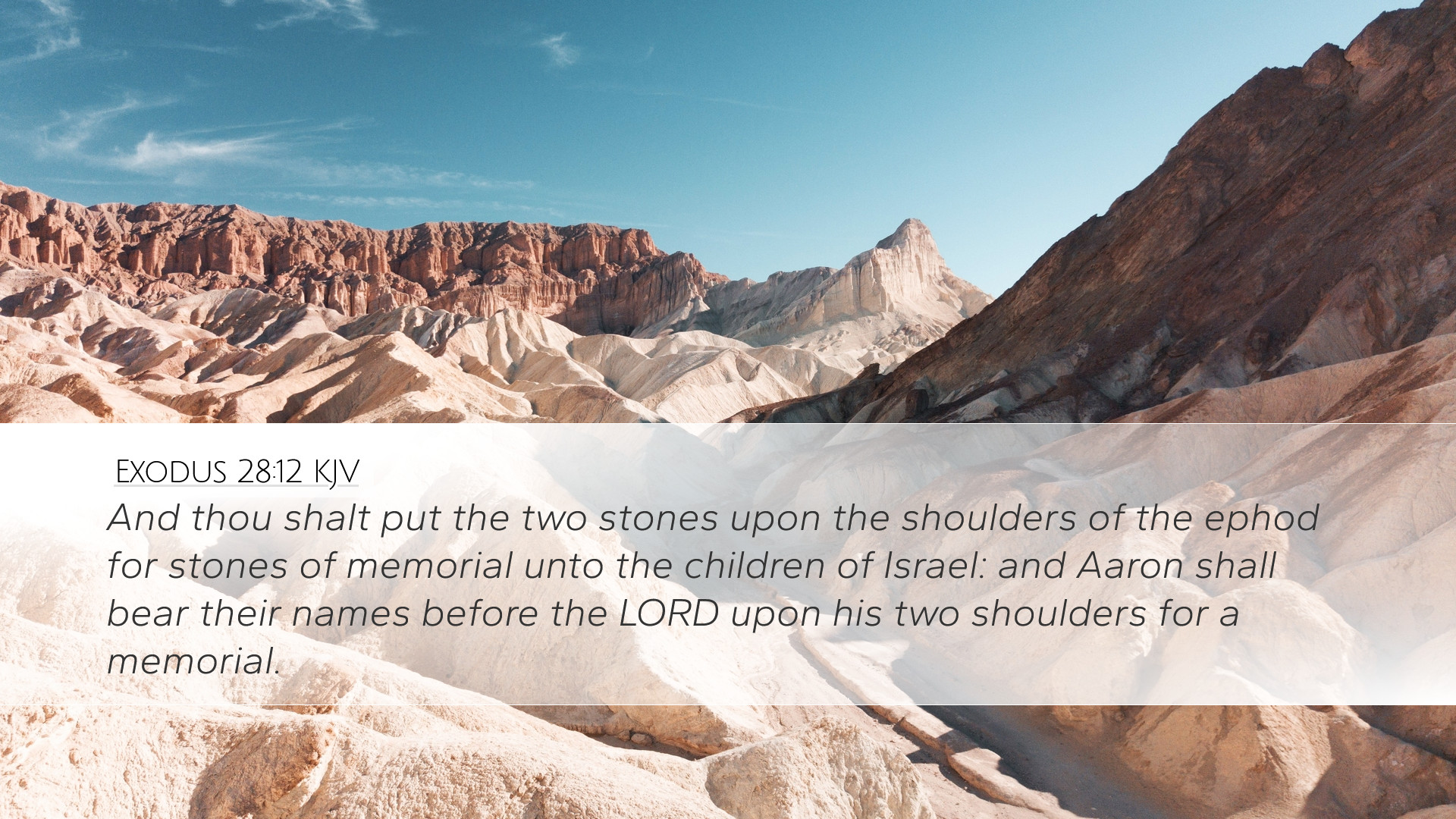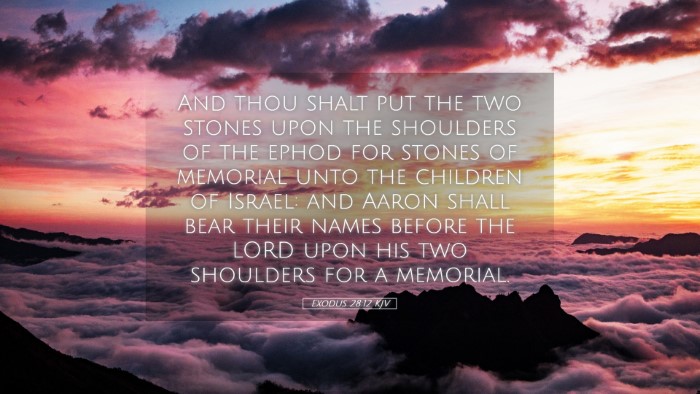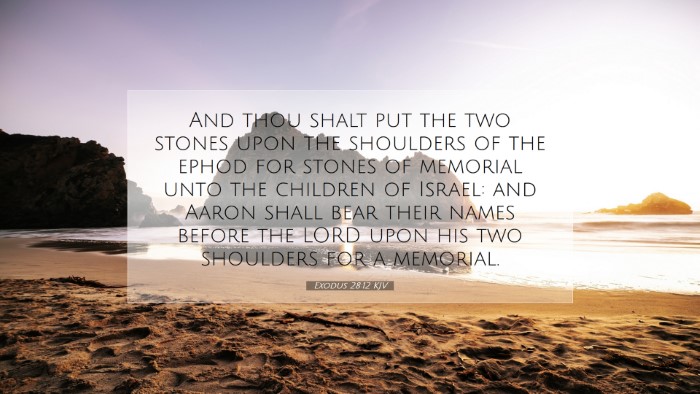Commentary on Exodus 28:12
Verse Context: Exodus 28:12 reads: "And thou shalt put both the stones upon the shoulders of the ephod for stones of memorial unto the children of Israel: and Aaron shall bear their names before the Lord upon his two shoulders for a memorial."
Introduction
This verse is part of the instructions for the garments of the high priest, specifically the ephod, which was a significant part of the priestly attire. The ephod symbolized not only the high priest's role but also his responsibility to bear the names of the tribes of Israel before God.
The Significance of the Stones
Matthew Henry's Commentary: Henry emphasizes the memorial aspect of the stones, which represented the tribes of Israel. These stones were not merely ornamental; they served to remind the high priest of his duty to intercede for the people.
Albert Barnes's Commentary: Barnes notes that the engraving of the tribes' names on the stones signified their perpetual representation before God. The high priest's bearing of these names symbolizes a continual acknowledgment of the Israelites in the divine presence.
Adam Clarke’s Explanation: Clarke elaborates on the beauty and craftsmanship required for these stones, highlighting that each stone reflected the unique place and importance of each tribe, which was critical in the communal identity of Israel.
The Law of the Priesthood
Clarke's Insight: Clarke refers to the historical context of the priesthood, connecting the ephod with the law, emphasizing that the high priest fulfilled the legal obligations to God on behalf of the people, and the stones were crucial in this representation.
Matthew Henry’s Perspective: Henry points out that this act of bearing the names also connects to the idea of accountability. The high priest not only presented the people to God but also bore the responsibilities associated with their conduct under the law.
Spiritual Implications
The Intercession of Christ: Both Barnes and Henry mention how the high priest’s role foreshadows the intercessory role of Christ. Just as Aaron bore the names of the tribes, Christ bears the names of believers, presenting them to God. This connection underscores the ongoing relationship between God and His people.
Communal Representation: Clarke notes that the notion of representation in priesthood emphasizes the communal aspect of faith. The high priest did not stand alone but embodied the collective responsibility and identity of the Israelites, which remains relevant in the Christian community today.
Applications for Today
Bearing One Another’s Burdens: Drawing from the themes in this verse, pastors and Christian leaders are reminded of their call to bear the burdens of their congregants in prayer, much like the high priest did for the people of Israel.
Identity in Christ: It also serves as an invitation for believers to see themselves as part of a larger body, recognizing their names and their stories as part of a community that is presented before God.
Liturgical Practices: This concept of memorial is also relevant in liturgical settings, where remembrance of individuals and community is crucial in worship, akin to how the high priest remembered the tribes.
Conclusion
Exodus 28:12, while a detailed instruction regarding the priestly garment, serves as a robust reminder of the spiritual principles of representation, responsibility, and intercession. As pastors, students, and scholars explore this text, its implications extend far beyond the ancient context, providing deep theological truths for the contemporary Christian experience.


